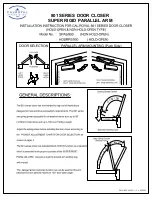
8784639
30A PRO CUT 30 PLASMA CUTTER
V1.0
10
For technical questions call 1-800-665-8685
1.1 Cover any combustible material with fire resistant
covers or shields, if it cannot be removed. The covering
must be tight and should not leave openings for sparks
or ejected slag to enter.
1.2. Check both sides of a panel or wall for combustible
material. Remove the combustible material
before welding.
2. A combustible floor should be protected with a fire resistant
covering. Alternatives are to spray the floor with water to
keep it wet for the duration of the welding or cover with
damp sand. Care must also be taken to avoid an electric
shock when this is done. A combustible floor directly laid
onto concrete does not need to be sprayed with water.
3. Check that there are no structural openings or cracks that
hot debris can enter. Seal any openings found with a fire-
resistant cover. Shut doors and windows that do not provide
ventilation or erect protective screens in front of them
when possible.
4. Avoid welding near hydraulic lines or containers containing
flammable contents.
5. Do not perform any welding work on containers that held
flammable or toxic substance until they are cleaned by a
person trained in removing toxic and flammable substances
and vapours per the American Welding Standard AWS F4.1.
6. Open a container before performing any welding work on
it. The heat generated by the welding process will cause
the air and gases to expand. The internal pressure may
cause a sealed or closed container to rupture, possibly
causing an injury or death.
7. Do not weld pipes or metal that are covered in combustible
material or in contact with combustible structure such as a
wall. Only weld if the covering can be safely removed.











































